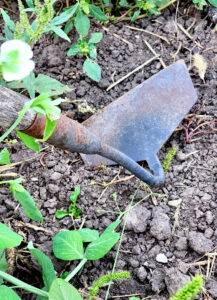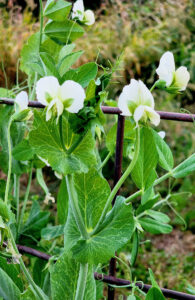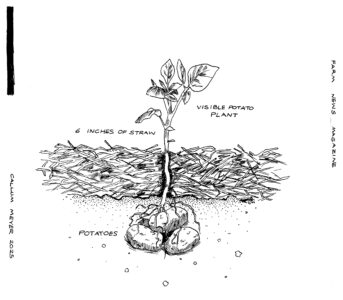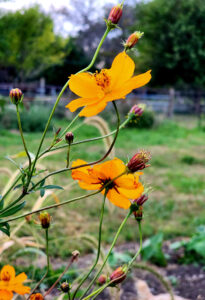How does your garden grow?
-
-Photo by Elizabeth Adams
Master gardener Kenneth O’Donnell, 92, formerly of rural Rolfe, has been gardening most of his life.
-
-Photo by Elizabeth Adams
-
-Photo by Elizabeth Adams
-
-Drawing by Callum Meyer
Kenneth O’Donnell says potatoes are better off stored in the ground than in a basement during the winter. To do so, he said a potato patch must be mulched really well with about 6 inches of hay or straw before the ground freezes, as demonstrated by this drawing.
-
-Photo by Elizabeth Adams
Double cosmos can brighten up any garden.

-Photo by Elizabeth Adams
Master gardener Kenneth O’Donnell, 92, formerly of rural Rolfe, has been gardening most of his life.
When you are a vegetable gardener, not much compares to bringing in the bounty of produce from the garden. Hot summer days turn peaches, apples, peppers and sweet corn into delicious and fragrant meals.
When fall arrives, it’s time to wrap up the harvest and put all the work to rest for the season.
But don’t hang up the garden gloves too fast. There is much to do before the ground freezes and snow flies.
Kenneth O’Donnell, a seasoned gardener who participated in the ISU Extension Master Gardener program for several years, is still gardening at 92 years of age. He said that though his parents did not garden much, he and his wife Donna did quite a bit while living on their 80 acres near Rolfe.
O’Donnell, who currently lives in southern Iowa, offered several helpful tips for harvesting and getting one’s garden ready for fall and winter.
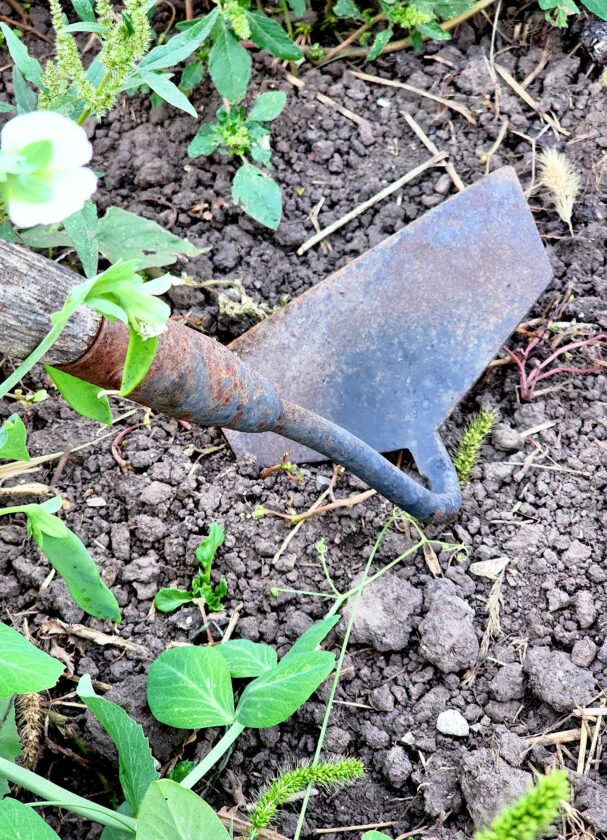
-Photo by Elizabeth Adams
He said he typically digs carrots, beets and other root crops before the ground freezes. Canna bulbs, gladiolas, and other bulbs need to be dug up before the ground freezes as well, especially if you would like to replant them in a new location in the spring.
Currently, O’Donnell is finishing up freezing late-summer vegetables. Potatoes will be the last thing he takes out, if he removes them from their hills at all.
“Potatoes don’t keep very well stored in the basement,” he said. “They keep better underground.”
He noted that when kept underground, potatoes convert starch to sugar, thus improving the flavor and quality. To do so, he said a potato patch must be mulched really well with about six inches of hay or straw before the ground freezes.
In addition, he said mulching can begin while plants are young, so potatoes won’t have to be planted as far underneath the soil. This also makes digging easier.
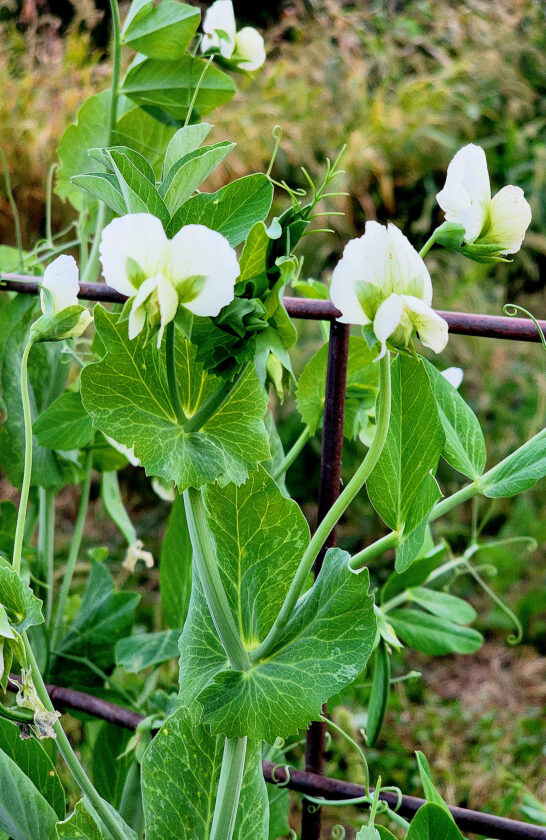
-Photo by Elizabeth Adams
O’Donnell recommends mulching much of the garden because of the benefits it offers, but said that it does require a lot of time and work.
“You can control blight in tomatoes, rot in green beans and retain moisture by mulching,” he said.
O’Donnell also plants a fall garden, including cool weather crops, such as lettuce and spinach. After he is done with his fall garden, he cleans his tools and puts a little oil on them to keep them free from rust during winter storage. If storing a tiller, he advised draining the fuel or putting in an additive to keep it winter safe.
To prepare the soil for winter and next year’s garden, O’Donnell explained that he uses a tractor and tiller to work his garden soil at the end of fall.
“I can’t till or plow where my wintering potatoes are,” he explained, “so the leftover vegetation in that part of the garden gets smashed or cut down. It (the vegetation) will break down over the winter.”
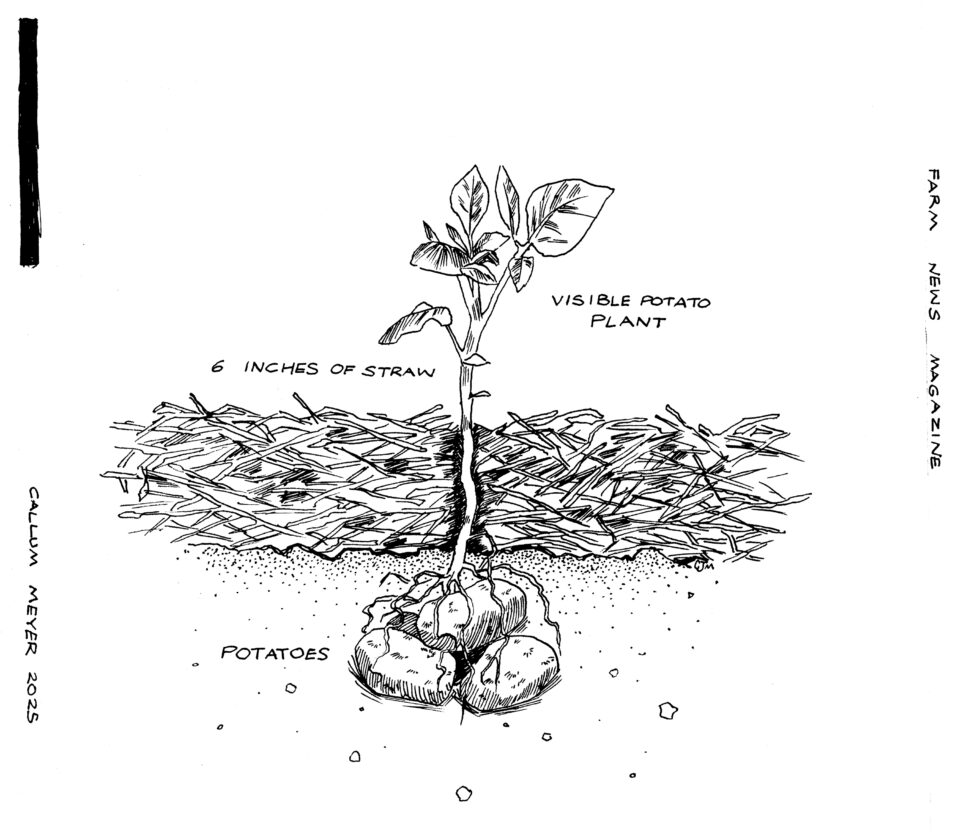
-Drawing by Callum Meyer
Kenneth O'Donnell says potatoes are better off stored in the ground than in a basement during the winter. To do so, he said a potato patch must be mulched really well with about 6 inches of hay or straw before the ground freezes, as demonstrated by this drawing.
He said that he does burn his tomato vines because they can harbor disease and insect eggs through the winter.

-Photo by Elizabeth Adams
Double cosmos can brighten up any garden.


